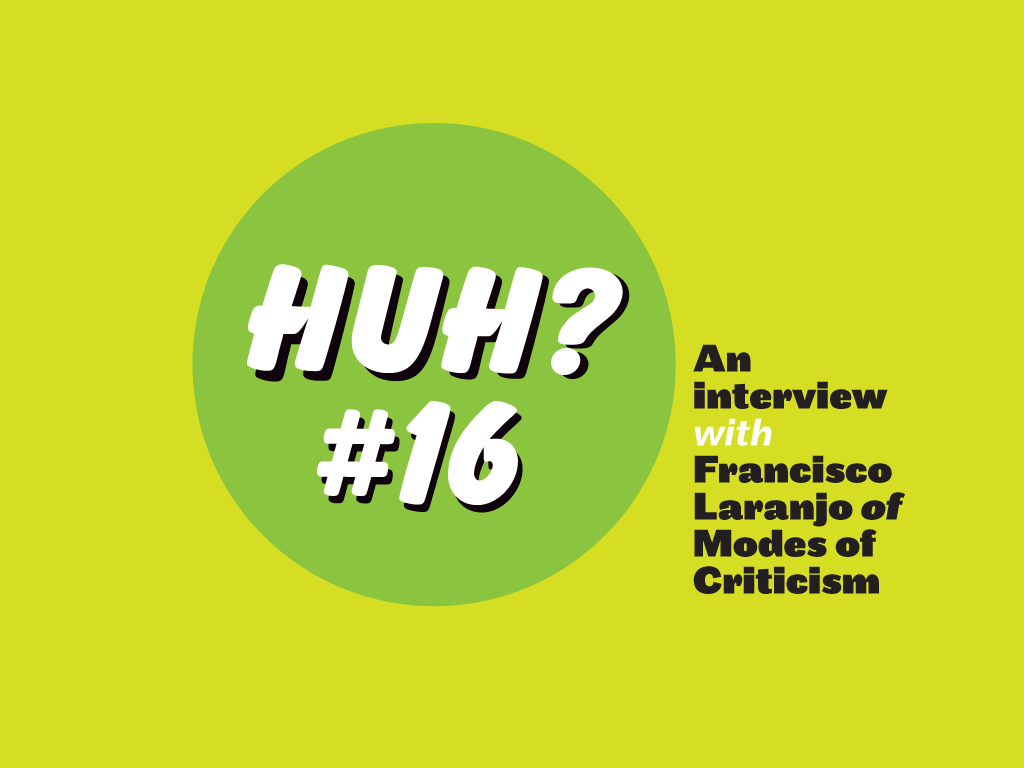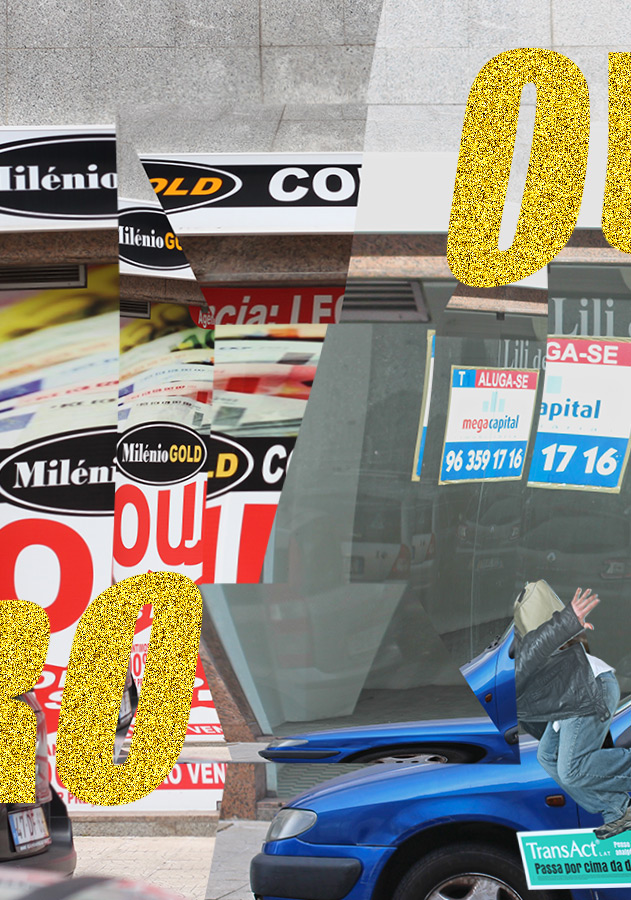Francisco Laranjo is a graphic designer based in London, UK. He is a researcher at the London College of Communication, teaches at the University of Westminster and has been a visiting and guest lecturer at universities such as the Royal College of Art, Sandberg Institute, Central Saint Martins and Kingston University. His writings have been published on Design Observer, Eye, Pli, among others. He is the editor of Modes of Criticism.
VCFA MFA in Graphic Design Chair (and frequent Modes of Criticism contributor) Ian Lynam chats with Francisco about design criticism, collaboration and academia.
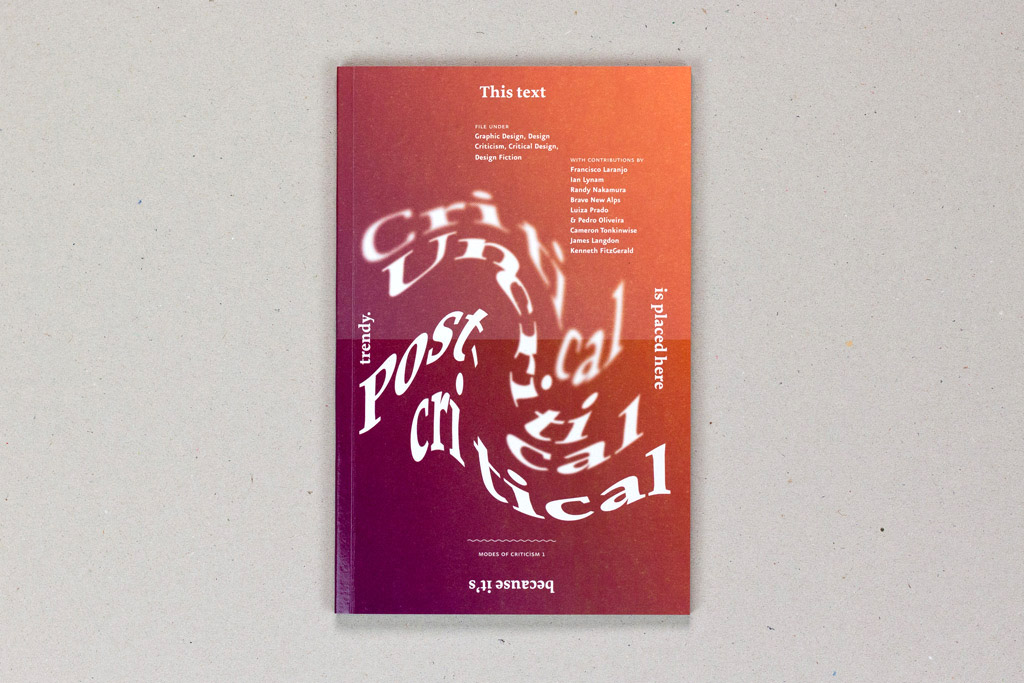
Cover, Modes of Criticism 1, 2015
1. You recently published Modes of Criticism 1, a criticism of critical design. What motivated you to pursue this theme with the debut issue?
The magazine was created in the context of my research at the London College of Communication, which seeks to develop research methods for a critical design practice with attention to the emergence of recent terminology such as critical design, design fiction and speculative design. Modes of Criticism attempts to address a gap in design discourse in relation to these terms, their history, methods and criticism. Even though the magazine will continue to exist after the research is concluded, it was used as a tool with various goals.
First, to engage with researchers, designers and writers whose research interests intersect that of the research mentioned above. This allowed an expanded access and insight to areas of study other than graphic design such as architecture and curating, for example. Second, to provide a platform for visual investigation. This is evidenced in the design of the publication, providing multiple opportunities to challenge the content of the articles and explore visual strategies such as in the visual essay The Architecture of Gambling, which condenses some of my research on betting shops and tax havens in the UK. Finally, it aims to expose ongoing academic research to a broader audience outside of academia, while opening up a platform that invites a variety of approaches to writing and criticism.
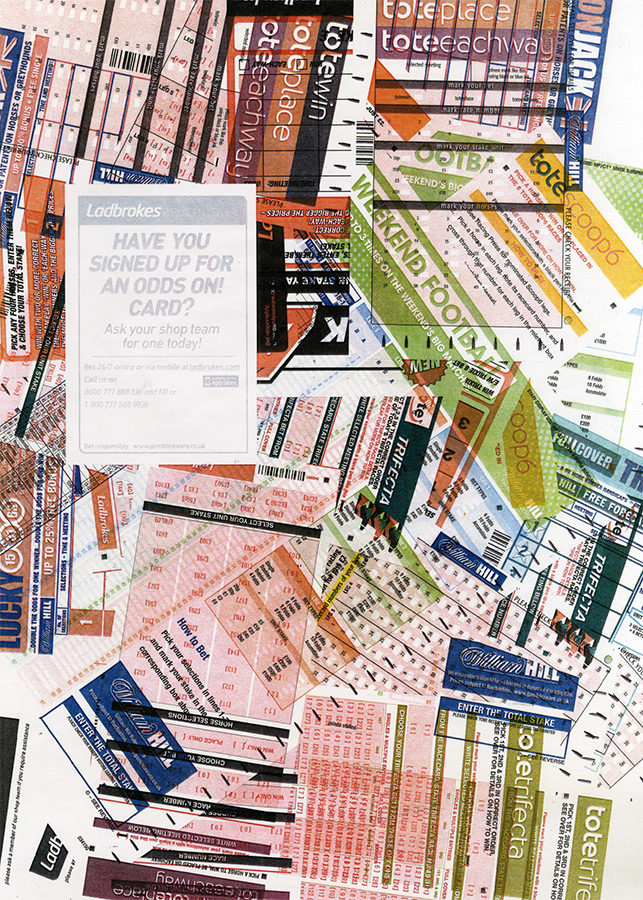
Odds on! (The Architecture of Gambling series), 50 x 70 cm, 2013
2. Where do you see the role of criticism functioning in relation to graphic design at present?
Calls for criticism are recurrent in the amnesiac graphic design discipline. Designers thrive on buzz, and criticism is bad PR. The essay Buzz Kill (2003) by Kenneth Fitzgerald continues to be very timely. Criticism is presently nearly inexistent. There has definitely been an increase of interest in critical practice in academia and eagerness from students to engage with political, cultural and social criticism through and as graphic design but the difficulty in maintaining such attitude after graduation continues to be evident. It survives only by establishing links to academia or/ and via extremely rare arts funding. In this sense, I see the role of criticism more as a fundamental research tool allowing the designer access to politics, ideology and emancipation rather than the yearning for an external, distanced entity that scrutinizes the designers’ work. Even though the latter is undoubtedly important and needed, it cannot be based on obsolete models of operation and revenue. The ratio of “design for inspiration and creativity” versus graphic design criticism websites is unsurprising. How many advertisers want to pay to see their brands associated with a reasoned, provocative and adversarial essay addressing the design work of a leading designer? Not many. It’s bad PR.
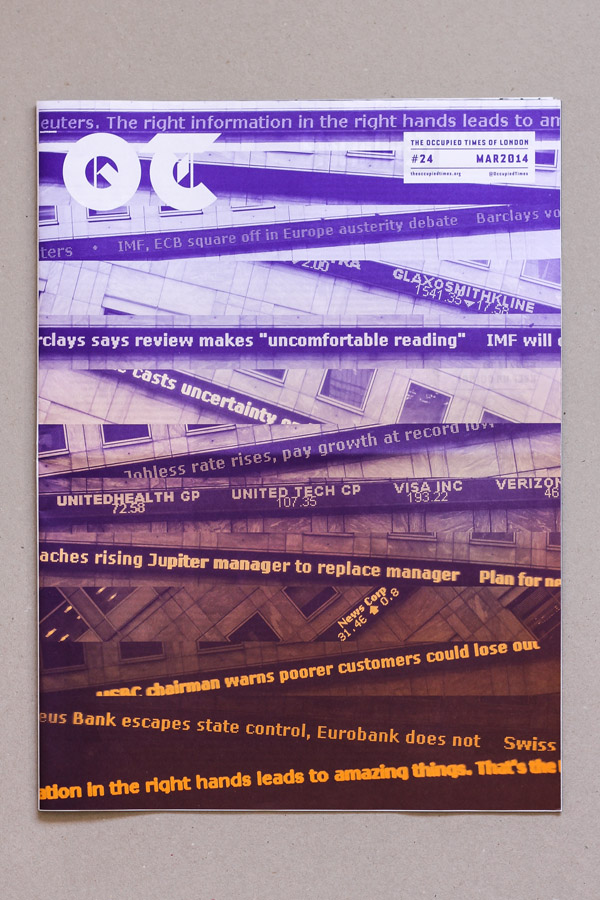
Cover for the Occupied Times 24 – The Politics of Madness, 2014
3. What do you have planned for Modes of Criticism 2?
The second issue will focus on a critique of method and work towards the repoliticization of the graphic designer. In this sense, it is connected with the first issue, which provides a context for method to be examined and criticized. It will have contributions by Jan van Toorn, Anne Bush, Peter Buwert, Chappell Elison, Noel Waite, Maria Portugal, among others. Van Toorn will reflect on the evolution of his method and the politicisation of means. Anne Bush will provide an essay that builds upon her seminal article Criticism and the Politics of Absence (1995), published in Emigre. Peter Buwert will address his ongoing research on method and defamiliaisation in relation to Bertolt Brecht. Chappell Elison will propose ways to challenge the uncritical tendency of style, signalled by Jeffery Keedy’s Global Style (2013) and Noel Waite will debate the methodological approaches of allohistory (a form of alternative, historical fiction), in what it is a different application of design fiction. Finally, design researcher Maria Portugal will reflect on her practice-based research at Goldsmiths University which explores strategies toward the repoliticization of the designer. There will be some other contributions and the launch is planned for the end of the year or beginning of 2016.
4. How do you choose the individuals that you collaborate with?
In the process of researching and writing about emergent terminology and mapping intersecting areas of research, it is possible to identify a vast range of disciplines that are profoundly connected to graphic design such as architecture, film, literature, philosophy, political science, to name just a few. From these, many sub-headings appear such as critical theory, cultural studies, and democracy, among others. This generates a large quantity of bibliographic references, which provide insight into both key and emerging authors who are active in those fields. The contributors are primarily connected to the focus of the magazine and especially to recent or unexplored issues. I try to have a gender-balanced list of contributors and a mix of established and new writers, designers and researchers.
5. How do you see the notion of subculture as it pertains to graphic design in the contemporary moment?
The curator Andrew Blauvelt said in Towards Critical Autonomy or Can Graphic Design Save Itself? (2003) that pluralism is the word that best described graphic design at the beginning of the 21st century. More than a decade has passed but I think this is still valid. Particularly with the help of social media and Tumblr, sub-cultures can rapidly become mainstream and swallowed by pop culture. For example, visual trends like vaporwave were quickly appropriated by designers, reblogged thousands of times and then branding takes over, waiting for the next sub-culture to be monetized. To track subcultures online requires almost a full-time job between Tumblr accounts, hashtags trying to gain popularity while Twitter bots and parody accounts generate a continuous stream of content. Perhaps the offline world still offers some opportunities. In many small zine fairs in London and elsewhere in the UK and Europe—which are the ones I visit more often—it is possible to find publications and projects that remain protected from the trendy spin designers like to give to the RISO/screen-print fairs with stylish websites optimised for iPhone 6 Plus.

Golden Visas (Golden Crisis series), 2014
6. What are some examples of recent writing that you think MFA students in graphic design should read?
Writings that work towards the politicization of design and discourse around technology can be extremely useful to MFA students. They should be a starting point, not an expansion of an interest. Evgeny Morozov is an obvious reference. Rob Horning is another, together with Justin McGuirk’s usually lucid essays. The recent collection Civic City Cahiers provides a good understanding of the natural habitat of graphic design, the city, with access to authors such as Gui Bonsiepe, Tom Holert, among others. The magazine Open! (2004–2012) was very good and the book compiling its key essays can be relevant for students. This kind of writing promotes a critical understanding of the politics and ideology at work in society, and the unavoidable connections with graphic design are very visible. It generates an autonomy that allows students to read and research design history and design with a resilient, critical distance.
Thanks so much for your time, Francisco.
Stay tuned for the next installment of “Huh?”, coming soon!Adidas footwear | Air Jordan Release Dates 2020

